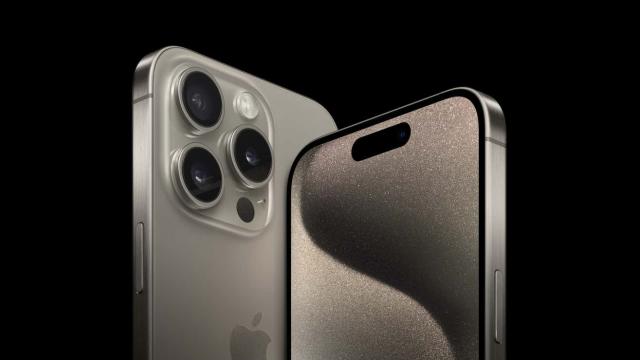A declining battery lifespan often forces people to consider upgrading their iPhones. To be clear, there’s nothing anyone can do to stop battery aging entirely. However, over the years, Apple has been adding features that help reduce its impact. The latest to join this list of features is a charge limiter, which is available for the iPhone 15 series. This allows you to stop charging the battery at 80% and thereby increase the battery’s lifespan.
Why do batteries age?
All batteries age; there’s no getting around it. Every time your battery is used up completely, it slightly lowers its overall effectiveness. This is called a cycle, and it doesn’t have to happen all at once, either. Sure, you can use your iPhone from 100% to 0%, and that would be one cycle, but you could also run it from 100% to 50%, charge it back up to 100%, and use it back down to 50% to complete one cycle.
One cycle on its own doesn’t age the battery much, but over time, these cycles wear it down. Keeping your phone at 100% battery for long periods of time can also contribute to aging. That’s why charge limiters can be useful: You can stop your iPhone from charging once it reaches 80%, elongating its overall lifespan.
How to enable the charge limiter on the iPhone 15
All of the phones in the iPhone 15 series have this new charging limiter option. To access this on your iPhone 15, go to Settings > Battery > Battery Health & Charging > Charging Optimization. Select the option labelled 80% limit to put a hard stop when the battery hits that level. This information was reported by The Verge’s Allison Johnson, in response to a question by MacRumors journalist Joe Rossignol.
Charging the device past 80% on a daily basis can speed up battery aging, and the ability to stop charging at this level is a great tool for those who want to extend their iPhone’s battery lifespan. It’s especially useful when you need to keep your iPhone connected to power for long periods of time, such as when plugging your iPhone into CarPlay during a lengthy drive.
How to manage battery health on your older iPhone
At this time, the built-in charge limiter is restricted to the iPhone 15 series. If the feature is entirely software-based, Apple may decide to bring it to older iPhones via a future iOS update, but if that doesn’t happen, here’s what you can still do to maximize battery lifespan.
Don’t disable automatic battery management
Your iPhone can already stop charging once it hits 80%, but only during times iOS thinks you won’t need to use your iPhone. This feature is called Optimized Battery Charging: iOS learns your usage habits over time, and only tops off to 100% based on that usage. Usually, that means it’ll hold at 80% overnight, until shortly before your typical wake up time. You can check if Optimized Battery Charging is enabled by going to Settings > Battery > Battery Health & Charging on your iPhone.
Avoid extreme temperatures
Extreme heat and cold are the biggest enemies of your iPhone’s battery. The phone is designed to work best in ambient temperatures of 62° F to 72° F (16° to 22° C). It’ll still work fine at slightly higher or lower temperatures, but the battery starts to get affected negatively when the iPhone is used in ambient temperatures higher than 95° F (35° C), or lower than 32° F (0° C). If you can’t avoid these temperatures, Apple warns against charging your iPhone when outside that zone.
Even if you ignore all these warnings, your iPhone has built-in safeguards to prevent the battery from being damaged. It’ll automatically shut down if the temperature is too high, and will sometimes stop charging past 80% when it’s unsafe to do so. Your case may be contributing to your iPhone heating up, so try removing the case while your iPhone is charging if it’s getting too hot.
Store your iPhone properly
If you’re going to be away from your iPhone for long periods, you should charge it to 50% before you switch it off and put it in storage. Store the device in a cool, dry environment, with temperatures lower than 90° F (32° C).
A few software tweaks to improve battery life
Apple also recommends some small tweaks to improve battery life. Here’s a quick checklist to help you quickly follow all these suggestions:
- Update your iPhone’s software.
- Use wifi where available—cellular data could drain your battery faster.
- Reduce screen brightness and don’t disable automatic brightness adjustment.
- Use Low Power Mode on your iPhone.
- Go to Settings > General > Background App Refresh and disable it for apps that don’t need to fetch data in the background.
- Disable location access for apps that don’t need this information from Settings > Privacy & Security > Location Services.
- Turn off unwanted app alerts by going to Settings > Notifications.
Replace the battery instead of the phone
If your iPhone’s battery continues to drain rapidly in spite of your best efforts, consider replacing its battery. First, check its battery health by going to Settings > Battery > Battery Health & Charging. If the Maximum Capacity is around 80%, a battery replacement could help. It’s free for those who purchased AppleCare+ for their iPhone, and for those who did not, it costs up to $US99. That’s a lot cheaper than buying a new iPhone, and could help you hold onto your older iPhone for an extra year or two. You can schedule a battery service on Apple’s website.

Leave a Reply
You must be logged in to post a comment.